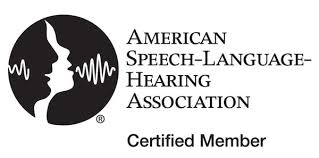
To use in your report, highlight text first then:
COPY
WINDOWS: Ctrl + C
MAC: Command + C
PASTE with no Formatting
WINDOWS: Ctrl + Shift + V
MAC: Shift + Option + Command + V
PASTE with Formatting
WINDOWS: Ctrl + V
MAC: Command + V
**Use for templates with tables**
Social-Emotional Evaluation (SEE)
The Social-Emotional Evaluation (SEE) evaluates the social skills and higher-level language that students need to interact successfully in everyday situations at home, at school, and in the community. The language abilities probed by the SEE are part of the repertoire of skills that define social-emotional competence. The SEE provides standardized scores and percentiles for receptive and expressive abilities for the following subtests:
Recalling Facial Expressions evaluates a student’s awareness and recognition of same-person facial expressions. The six universally recognized basic emotional categories (i.e., happiness, sadness, anger, disgust, fear, and surprise) and neutral expressions are featured in the test items.
Identifying Common Emotions assesses a student’s ability to identify common emotions when shown four illustrations of different facial expressions. It assesses a student’s ability to recognize emotional reactions when shown an illustration (i.e., receptive ability). Then, the examiner evaluates the student’s ability to name the emotional reaction (i.e., expressive ability).
Understanding Social Gaffes evaluates the ability to recognize social gaffes that result in peer conflicts. Using pictures paired with audio recordings, the student must identify if everyone is doing the right thing (i.e., receptive ability) and, if necessary, identify who is doing the wrong thing and what he/she should have done (i.e., expressive ability).
Understanding Conflicting Messages assess a student’s ability to recognize conflicts of interpersonal communications caused by incongruities between verbal and non-verbal aspects (e.g., sarcasm, lying). Using pictures paired with audio recordings, the student must identify if the speaker meant what he/she said (i.e., receptive ability). If the student recognizes that the verbal message did not express the full intent, the student must respond to the question, “Why did he/she say that?” (i.e., expressive ability).
| Subtest | Standard Score | Percentile Rank |
| Recalling Facial Expressions | ||
| Identifying Common Emotions | ||
| Identifying Emotional Reactions | ||
| Understanding Social Gaffes | ||
| Understanding Conflicting Messages | ||
| Overall |





